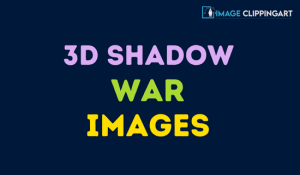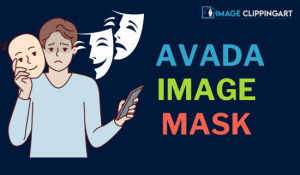3D Shadow of War Images: In the ever-evolving landscape of digital entertainment, the gaming industry has consistently pushed the boundaries of technology and creativity. One of the notable milestones in this journey has been the advent of 3D gaming and the visually stunning worlds it has brought to life. Among the titles that have made a mark in this domain is “Shadow of War.” This article delves into the realm of 3D Shadow of War images, exploring their significance and the artistry behind them.
Gaming Revolution: 3D Shadow of War Images
Before we dive into the world of “Shadow of War,” let’s first understand the significance of 3D graphics in the gaming industry. In the early years of gaming, 2D graphics dominated the scene. Games were limited to simple side-scrolling or top-down perspectives, often with pixelated characters and environments. However, as technology advanced, the shift towards 3D graphics opened up a whole new realm of possibilities.
3D graphics allowed game developers to create immersive worlds with lifelike characters, intricate environments, and dynamic lighting. This leap in technology not only enhanced the gaming experience but also gave rise to entirely new genres and gameplay mechanics. Among the games that embraced the 3D revolution was “Shadow of War.”
3D Shadow of War Images: A Glimpse into Mordor
“Middle-earth: Shadow of War” is an action role-playing video game developed by Monolith Productions and published by Warner Bros. Interactive Entertainment. Released in 2017, it serves as a sequel to “Middle-earth: Shadow of Mordor” and is set in J.R.R. Tolkien’s fictional universe, Middle-earth.
The game’s narrative is a captivating journey filled with epic battles, political intrigue, and a dynamic nemesis system that ensures no two playthroughs are the same. However, what truly sets “Shadow of War” apart is its breathtaking 3D graphics and, more specifically, the 3D Shadow of War images that transport players into the dark and perilous world of Mordor.

3D Shadow of War Images: A Visual Feast
The graphics in “Shadow of War” are nothing short of a visual feast. The 3D images are rich in detail and designed to immerse players in the gloomy and treacherous landscapes of Mordor. Here’s a closer look at what makes these images so remarkable:
Realistic Environments
Mordor, the primary setting for the game, is depicted in stunning detail. The barren wastelands, towering fortresses, and ominous volcanoes are brought to life in such a way that players can almost feel the heat of the lava or the cold wind blowing through the desolation.
Lifelike Characters
The characters in “Shadow of War” are meticulously crafted, with attention paid to their expressions, movements, and attire. Whether it’s the protagonist, Talion, or the numerous Orcs and Uruks, each character is a work of art. The game’s Nemesis system ensures that enemies you engage with remember past encounters, creating a dynamic and personalized experience.
Dynamic Lighting and Shadows
Light and shadow play a pivotal role in creating a sense of immersion in the game. The dynamic lighting system ensures that the world of Mordor feels realistic, with shifting shadows that add depth and atmosphere to every scene. This dynamic interplay of light and shadow is a testament to the power of 3D graphics.
Cinematic Moments
“Shadow of War” features epic battles and moments that feel like they’ve been pulled straight from a Hollywood blockbuster. The 3D images and animations during these sequences are a visual treat, drawing players deeper into the game’s narrative.
The Artistry Behind 3D Shadow of War Images
Behind every stunning 3D image in “Shadow of War” is a team of talented artists, designers, and developers who work tirelessly to bring this fantastical world to life. The artistry involved in creating these images is a testament to the dedication and passion of the game’s creators.
Concept Art
The journey to creating 3D images begins with concept art. Artists sketch out their vision for characters, environments, and scenes, taking inspiration from Tolkien’s rich source material. This art is the blueprint that guides the entire design process.
3D Modeling
Once the concept art is finalized, the 3D Shadow of War Images begins. Artists use specialized software to create 3D Shadow of War Images of characters, creatures, and landscapes. These models serve as the foundation for the final 3D images and animations.
Texture Mapping
Texture mapping involves adding intricate details to the 3D Shadow of War Images. This includes creating realistic textures for skin, clothing, weapons, and environmental elements. Every crease, wrinkle, and scratch is meticulously designed to enhance the visual fidelity.
Animation
Bringing characters to life in a 3D world requires complex animations. Animators work on movements, expressions, and combat sequences to ensure characters behave naturally and believably. The attention to detail in animation is what makes the characters in “Shadow of War” feel so lifelike.
Lighting and Rendering
As mentioned earlier, lighting and shadows are pivotal in creating immersive 3D images. The game’s engine renders these elements in real-time, enhancing the atmosphere and visual appeal of the game.
Quality Assurance
Before any 3D image makes its way into the final game, it undergoes rigorous quality assurance testing. This ensures that the visuals are glitch-free and that they meet the high standards set by the development team.
Beyond Gameplay: 3D Shadow of War Images in Pop Culture
“Shadow of War” isn’t just a game; it’s a piece of pop culture that has made its mark in various ways beyond the gaming community.
Fan Art
The game’s rich visual design has inspired a plethora of fan art. Talented artists from around the world have created their interpretations of characters, scenes, and concepts from “Shadow of War.” This fan art community keeps the game’s spirit alive, even years after its release.
Cosplay
Cosplayers have taken to recreating the iconic characters from the game, donning detailed costumes and makeup to embody the likes of Talion and the fearsome Orcs. The dedication of these cosplayers highlights the lasting impact of the 3D Shadow of War Images in the game.
Collectibles
The popularity of “Shadow of War” has led to the creation of collectibles, such as action figures and statues based on the game’s characters. These collectibles are sought after by fans and collectors alike, further solidifying the game’s presence in popular culture.
YouTube and Streaming
The visually stunning 3D images in “Shadow of War” have made the game a favorite among YouTubers and game streamers. Players and content creators share their adventures in Mordor, showcasing the game’s breathtaking graphics to a global audience.
The Evolution of 3D Graphics in Gaming
“Shadow of War” is not an isolated example of outstanding 3D graphics in gaming. It’s part of a broader trend where the gaming industry continually strives to push the boundaries of what’s visually possible. From photorealistic open-world environments to lifelike character animations, the evolution of 3D graphics has transformed the way we experience video games.
Ray Tracing
One of the most significant recent advancements in 3D graphics is ray tracing. This technology simulates the behavior of light in real-time, resulting in even more realistic lighting and shadows. Ray tracing has the potential to make games look nearly indistinguishable from reality, taking immersion to a whole new level.
High-Resolution Textures
As hardware becomes more capable, game developers can create and use high-resolution textures that bring out even the finest details in characters and environments. These textures are vital in making 3D images as lifelike as possible.
Virtual Reality
The advent of virtual reality (VR) has further enhanced the immersive potential of 3D graphics. VR headsets allow players to step into the game world, experiencing it from a first-person perspective. This technology creates a sense of presence and realism that was previously unimaginable.
Conclusion
The world of 3D Shadow of War images is a testament to the power of technology, creativity, and artistry in the gaming industry. “Middle-earth: Shadow of War” has captured the imaginations of gamers and enthusiasts alike with its stunning visuals, captivating narratives, and intricate character designs. It not only exemplifies the achievements of 3D graphics but also highlights the enduring impact of video games on popular culture.
As technology continues to evolve, we can only imagine the visual spectacles that future games will bring. The boundaries of what’s possible in 3D graphics are ever-expanding, and the worlds created in video games continue to blur the line between reality and fiction. In the realm of gaming, we have truly embarked on an epic journey of exploration and discovery.
Facebook – facebook.com/imageclippingart






